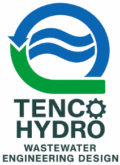Designing pasteurized tanks for industrial applications involves numerous considerations to ensure efficiency, safety, and compliance with regulatory standards. Below, we discuss the most important factors to take into account when designing pasteurized tanks for industries such as food and beverage, pharmaceuticals, and dairy.
1. Material Selection
Choosing the right material for pasteurized tanks is crucial. Stainless steel is commonly used due to its durability, resistance to corrosion, and ease of cleaning. Specifically, 304 or 316 stainless steel is preferred for its high resistance to chemical and thermal damage, which is essential for maintaining the integrity of the pasteurization process.
2. Tank Size and Capacity
Determining the appropriate size and capacity of the tank is essential for meeting production requirements. Factors such as the volume of product to be processed, the available space in the facility, and the need for potential future expansion should be considered. Adequate sizing ensures the tank can handle the pasteurization load efficiently without overburdening the system.
3. Thermal Insulation
Proper insulation is vital for maintaining the desired temperature during pasteurization. Insulated tanks help in reducing heat loss, ensuring consistent temperatures throughout the process. This not only improves energy efficiency but also ensures that the product is pasteurized uniformly, which is crucial for product safety and quality.
4. Heating and Cooling Systems
Integrating effective heating and cooling systems within the tank design is paramount. These systems must be capable of achieving and maintaining the precise temperatures required for pasteurization. Common methods include steam jackets, external heat exchangers, and immersion heaters. Equally important is the ability to cool the product quickly post-pasteurization to preserve quality and extend shelf life.
5. Agitation and Mixing
Ensuring uniform temperature distribution and preventing the formation of hot or cold spots within the tank is achieved through proper agitation and mixing. Designing tanks with effective agitators or mixers ensures that the entire volume of the product is exposed to the necessary temperature conditions for pasteurization, thereby enhancing product consistency and safety.
6. Hygienic Design and Cleanability
Maintaining high hygiene standards is non-negotiable in pasteurized tank design, especially in food, beverage, and pharmaceutical industries. Tanks should be designed with smooth, polished surfaces to prevent microbial growth and ensure easy cleaning. Incorporating CIP (Clean-In-Place) systems allows for automated and thorough cleaning without disassembling the tank, thus reducing downtime and improving operational efficiency.
7. Pressure and Safety Considerations
Pasteurized tanks often operate under varying pressure conditions. Designing tanks to withstand these pressures is crucial to prevent leaks, ruptures, or other safety hazards. Safety features such as pressure relief valves, temperature sensors, and emergency shut-off systems should be integrated into the design to ensure safe operation.
8. Regulatory Compliance
Compliance with industry standards and regulations, such as those set by the FDA, USDA, or equivalent bodies, is essential. These regulations govern aspects such as material selection, design specifications, safety features, and hygiene standards. Ensuring that the tank design meets or exceeds these regulatory requirements is critical for legal compliance and market acceptance.
9. Customization and Flexibility
Considering the specific needs of the production process, the tank design should offer customization and flexibility. This might include features like variable speed mixers, multiple inlet/outlet ports, and adaptable heating/cooling systems. Flexibility in design allows the tank to be used for different products or processes, enhancing its utility and return on investment.
Conclusion
Designing pasteurized tanks for industrial use is a complex task that requires careful consideration of multiple factors to ensure efficiency, safety, and regulatory compliance. By focusing on material selection, tank size, thermal insulation, heating and cooling systems, agitation, hygienic design, pressure considerations, regulatory compliance, and customization, manufacturers can create tanks that meet the demanding needs of the industry. Effective pasteurized tank design not only enhances product quality and safety but also improves operational efficiency and longevity of the equipment.
